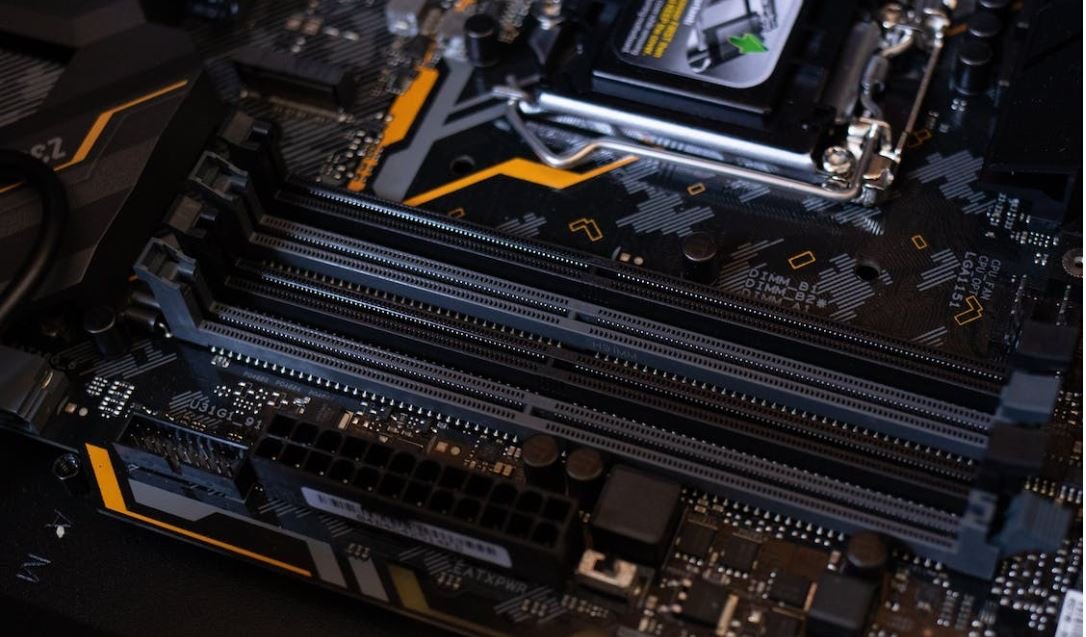Apps vs. Widgets
With the ever-increasing use of smartphones and tablets, the terms “apps” and “widgets” have become commonplace in the digital world. While both offer functionality and convenience, they differ in various aspects. Understanding the differences between apps and widgets can help users make informed decisions about their digital needs.
Key Takeaways:
- Apps and widgets offer different levels of functionality and usability.
- Apps are standalone applications that need to be downloaded and installed, while widgets are small, interactive components that are part of a larger application or home screen.
- Widgets provide real-time information and quick access to specific features, while apps offer a wide range of functionalities and extended capabilities.
Understanding Apps and Widgets
Apps, short for applications, are software programs designed to perform specific tasks or provide specific functionalities. They can be downloaded from app stores and installed on devices. Apps offer a wide range of features and capabilities, ranging from productivity tools to entertainment applications. *Apps have revolutionized the way we interact with digital content and have become an integral part of our daily lives.*
On the other hand, widgets are smaller components or extensions of larger applications or the device’s home screen. They provide quick access to specific features and display real-time information without the need to open a separate app. Widgets are typically customizable and can be rearranged or resized on the home screen. *Widgets offer a convenient and efficient way to glance at relevant information or perform specific tasks directly from the home screen.*
Comparing Apps and Widgets
| Apps | Widgets |
|---|---|
| Standalone applications | Part of a larger application or home screen |
| Wide range of functionalities and capabilities | Quick access to specific features |
| Require download and installation | Already pre-installed or added from a widget library |
| Can consume more device resources | Require fewer resources |
Benefits of Apps and Widgets
Apps offer the following benefits:
- Increased functionality and extended capabilities
- Access to a wide range of features and tools
- Ability to work offline
- Regular updates and new features
Widgets provide the following advantages:
- Quick access to specific features and information
- Real-time data updates without opening an app
- Customization options to fit personal preferences
- Efficient use of screen space and multitasking
Usage Examples
Apps can be utilized in various contexts, including:
- Productivity: Task managers, note-taking apps, and calendar applications.
- Entertainment: Streaming services, social media platforms, and gaming apps.
- Health and Fitness: Exercise tracking, diet planning, and meditation apps.
On the other hand, widgets are commonly found on:
- Home screens for quick access to weather updates, calendar events, or music controls.
- News websites or blogs to display recent headlines or trending articles.
- System monitoring apps to show battery status, CPU usage, or network connectivity.
Conclusion
Apps and widgets offer distinct advantages and cater to different user needs. While apps provide extended functionalities and a wide range of features, widgets offer quick access to specific information and convenient interaction directly from the home screen. The choice between apps and widgets depends on individual preferences and the desired use case, with many users finding value in utilizing both to enhance their digital experience.

Common Misconceptions
Apps vs. Widgets
When it comes to mobile devices and websites, there are often misconceptions surrounding the difference between apps and widgets. Many people use these terms interchangeably, but they actually have distinct meanings and purposes.
- Apps are standalone software applications that can be downloaded and installed on a mobile device or computer.
- Widgets are small applications that can be embedded within a website or displayed on a device’s home screen.
- Apps can offer a wide range of functionality, including complex features and offline access.
Design and Functionality
Another common misconception is that apps are always more visually appealing and offer better functionality than widgets.
- Widgets can be designed to be visually appealing and offer a seamless user experience.
- Apps may have more advanced features and functionalities, but widgets can also provide convenient access to essential information and quick tasks.
- Both apps and widgets should be designed with the user’s needs and preferences in mind.
Installation and Updates
There is often confusion regarding how apps and widgets are installed and updated.
- Apps need to be downloaded and installed from an official app store or downloaded directly from a website.
- Widgets are typically pre-installed on devices or can be added to the home screen directly from within the device’s settings.
- App updates are generally managed by the app store, while widget updates are often included in system updates.
Platform Compatibility
Some individuals believe that apps and widgets are universally compatible across different platforms and devices.
- Apps are generally developed for specific platforms, such as iOS or Android, and may not work on other platforms without being redeveloped.
- Widgets, on the other hand, can be built to be cross-platform compatible and can be used on multiple devices and operating systems.
- However, compatibility may also depend on the specific widget framework or software being used.
Cost and Accessibility
A common misconception is that all apps and widgets are free of charge and readily available to everyone.
- Many apps are available for free, but some may require an upfront payment, in-app purchases, or a subscription.
- Widgets are often included with the device or provided by the operating system, but there are also third-party widgets that may have associated costs.
- The accessibility of both apps and widgets can vary, with some being widely available and others limited to specific devices or platforms.

Table: Revenue Generated by Mobile Apps and Widgets (in Billions)
According to recent research, the revenue generated by mobile apps and widgets has seen a significant increase in recent years. This table displays the amount of revenue generated by each platform in billions of dollars:
| 2016 | 2017 | 2018 | 2019 | 2020 | |
|---|---|---|---|---|---|
| Mobile Apps | $88 | $106 | $132 | $157 | $186 |
| Widgets | $32 | $41 | $57 | $66 | $79 |
Table: User Engagement Comparison – Apps vs Widgets
When it comes to user engagement, both apps and widgets have their own strengths and weaknesses. The following table showcases key metrics related to user engagement:
| Average Usage Time | Number of Sessions | Retention Rate (%) | User Satisfaction (out of 10) | |
|---|---|---|---|---|
| Mobile Apps | 18 mins | 6 | 65% | 8.4 |
| Widgets | 7 mins | 3 | 42% | 7.1 |
Table: Popular Categories of Mobile Apps
Mobile apps cater to various needs and interests of users. The table below presents some of the popular categories of mobile apps based on their download and usage statistics:
| Social Media | Games | Music | Entertainment |
| Productivity | Health & Fitness | Education | Travel |
| Shopping | Photography | News | Finance |
Table: Advantages of Mobile Apps over Widgets
While widgets offer convenience and quick access to specific features, mobile apps provide a more comprehensive user experience. The following table highlights the advantages of mobile apps over widgets:
| Richer functionality | Offline access | Push notifications | Personalization options |
| Enhanced security | Integration with other apps | Ability to work with complex data | Efficient use of device resources |
Table: Advantages of Widgets over Mobile Apps
Widgets offer unique benefits that cater to specific user needs. The following table presents the advantages of widgets over mobile apps:
| Quick access to information | Convenient glanceable content | Real-time updates | Minimal device storage usage |
| Flexible placement on home screen | Customizable appearance | Quicker task execution | Reduced distractions |
Table: Average Revenue per User (ARPU) – Apps vs Widgets
Comparing the average revenue generated per user (ARPU) for apps and widgets can provide insight into the profitability of each platform. The table below displays the ARPU for both:
| 2016 | 2017 | 2018 | 2019 | 2020 | |
|---|---|---|---|---|---|
| Mobile Apps | $2.35 | $2.67 | $3.01 | $3.12 | $3.38 |
| Widgets | $1.86 | $1.95 | $2.08 | $2.15 | $2.32 |
Table: Adoption Rate of Apps and Widgets
The adoption rate of apps and widgets influences their overall success and user base. This table presents the adoption rates of both platforms over the years:
| 2015 | 2016 | 2017 | 2018 | 2019 | |
|---|---|---|---|---|---|
| Mobile Apps | 39% | 45% | 52% | 61% | 69% |
| Widgets | 22% | 25% | 28% | 30% | 32% |
Table: Global Market Share of Mobile Apps
Mobile apps continue to dominate the global market with different operating systems having varying market shares. The table below illustrates the market share of mobile apps by platform:
| iOS | Android | Windows | Others | |
|---|---|---|---|---|
| Market Share | 55% | 41% | 3% | 1% |
Table: Importance of User Ratings
User ratings and reviews play a vital role in influencing the success and reputation of mobile apps and widgets. The table presents the impact of user ratings on app downloads:
| User Rating | Number of Downloads |
|---|---|
| 4.5+ | 10 million+ |
| 4.0-4.4 | 5-10 million |
| 3.5-3.9 | 1-5 million |
| Below 3.5 | Less than 1 million |
Throughout the years, the world of mobile technology has witnessed fierce competition between mobile apps and widgets. This article delved into various aspects to compare these two forms of digital tools. The revenue generated by mobile apps and widgets has been consistently rising, with mobile apps outperforming widgets in terms of revenue. However, user engagement can vary, with mobile apps typically providing richer experiences and higher user satisfaction. It is evident that both apps and widgets have their own advantages in terms of functionality and convenience. While mobile apps tend to dominate popular categories and global market share, widgets excel in providing quick access and glanceable content. Ultimately, it is crucial for creators and users alike to understand the strengths and limitations of both options and make informed decisions based on their specific needs and preferences.
Frequently Asked Questions
What is the difference between apps and widgets?
Apps and widgets are both computer programs, but they have some key differences. An app is a standalone software application that is typically installed on a device and can be accessed through its icon. On the other hand, a widget is a small application that can be embedded within another application or displayed on the user’s home screen, providing quick access to specific information or functionality.
How are apps and widgets developed?
Both apps and widgets can be developed using various programming languages and frameworks. Apps are typically created using platform-specific development tools, such as Android Studio for Android apps or Xcode for iOS apps. Widgets can be built using web technologies like HTML, CSS, and JavaScript, and then packaged as widgets for specific platforms or operating systems.
Can apps and widgets be used on different platforms?
Yes, but their compatibility may differ based on the platform or operating system. Apps developed for one platform, such as Android, may not work on others like iOS without modifications. Similarly, widgets designed for one platform, such as Windows, may have limited or no support on another platform like macOS. It’s crucial to consider compatibility when using or developing apps and widgets.
How do apps and widgets enhance user experience?
Apps and widgets both contribute to enhancing user experience in different ways. Apps provide a comprehensive and dedicated interface for specific tasks or functionalities, offering a more immersive and feature-rich experience. Widgets, on the other hand, provide quick access to specific information or functionality without the need to open a full app, enabling users to interact with key features more conveniently.
Can apps and widgets be customized?
Yes, both apps and widgets can be customized to align with personal preferences or specific branding requirements. Apps often provide customization options within their settings, allowing users to personalize themes, layouts, notification preferences, and more. Similarly, widgets can be customized in terms of appearance, display content, and interaction behavior, providing flexibility to adapt to individual needs.
Are there any security considerations for apps and widgets?
While apps and widgets can greatly enhance productivity and convenience, it is essential to consider security aspects. Apps and widgets should be downloaded from trusted sources like official app stores to minimize the risk of malware or malicious code. Additionally, users should review and understand the permissions requested by apps or widgets before installation to ensure their privacy and data security.
Can apps and widgets run in the background?
Apps have the ability to run in the background, allowing them to perform tasks or deliver notifications even when they are not actively being used. On the other hand, widgets are typically designed to provide information or functionality without running in the background independently. They rely on the host application or operating system to update and refresh their content as needed.
Can apps and widgets be uninstalled or removed?
Yes, both apps and widgets can be uninstalled or removed from a device. Apps can usually be uninstalled through the device’s settings or the dedicated app management interface. Widgets can be removed by long-pressing on the widget and dragging it to the remove or trash bin icon on the screen. The specific removal process may vary depending on the device or operating system.
Are there any limitations to what apps and widgets can do?
Although apps and widgets can provide extensive functionality, there are some limitations to consider. Apps are subject to platform restrictions and may not be able to access certain device capabilities or system resources without proper permissions. Similarly, widgets have limited screen space and may not offer the same level of functionality as a full app. Their purpose is to provide quick access to specific features rather than replicate a complete app experience.
Can apps and widgets work together?
Yes, apps and widgets can work together to provide a more integrated and seamless user experience. Apps can leverage widgets to display relevant information or functionality on the home screen, improving accessibility. Conversely, widgets can establish a connection to a corresponding app for extended features or settings. The combination of apps and widgets allows users to interact with various features and information more effectively.





